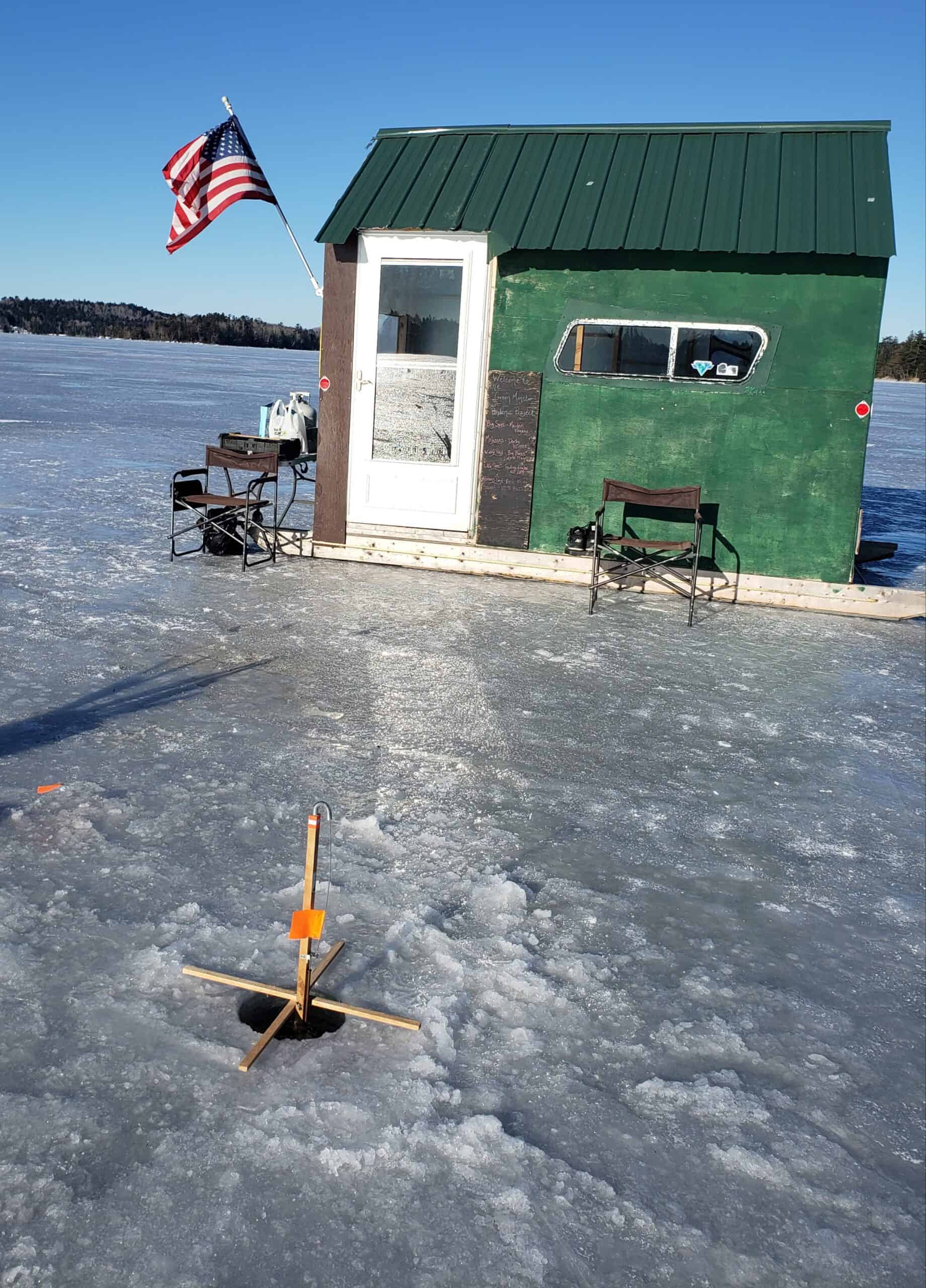Preparing for the ice fishing season.
The season is upon us, and here in Maine, we are getting our ice fishing shelters ready. Every year we hope that New Year’s Day will bring enough ice for us to spend opening day doing what we love. Drilling holes, setting traps, a few beers maybe, and we are FISHING.
When we get to those more bitterly cold days, a little bit of shelter makes all the difference. No matter what the structure is built with, in Maine, we call them ice fishing shacks, or even just ice shacks. Some may know them as houses or shanties, but they all serve the same purpose of protecting us from the harsh elements of the northern winters.
Functions of our ice shacks.
Getting shelter from the elements isn’t the only function of the ice shack. We use them as kitchens and game rooms as well. There is nothing like the aroma of moose meat sizzling in the frying pan while a competitive game of cribbage is heating the shack in other ways.

Here are a few structures that work for us on Maine lakes and ponds.

The self-made ice shack. We built this one in 2020 when we were under quarantine… (wow, I don’t like being reminded of those times). This is a rather large specimen, but we knew we would have a lot of company that winter, as outdoor activities were the one thing we could partake in.
We had most of the materials on hand.
All the items we needed to build we pretty much had on hand, so it worked out great. Look for another post soon where I will share the details on what made it highly functional for us.
This particular house had a wall-mounted propane heater, which worked excellent. It was so easy to control the temperature. My husband was given the heater by a client of his, so it was of no expense to us!
These bigger ice fishing shelters are best if you plan on residing at one particular body of water for the season, or can move it easily with a trailer, as we did. And when I say me, it usually means HIM.

Tent Shelters

The Eskimo Tent is perfect for one day on the ice. Set up in the morning, take down in the afternoon. Some die-hard fishermen such as YouTube sensation Joe Holland will camp on the ice for days in this shelter. Mind you, a few guys to help out on this one makes it so much easier. Securing it to the ground is a must, I’ve seen these babies roll across the lake in high winds. Throw in a small folding table and a few camp chairs to make it comfortable. These are perfect for families, as the kids don’t want to hang out inside, except to get warm. The Eskimo brand is highly durable and holds heat well. Add a Mr. Buddy portable heater, or similar, and your tent will heat up in no time.

The Frabill small tent. Ideal for a two-man day trip. While not quite as durable as the Eskimo, it will do the job for the day, providing the winds are not gusty. An easy up-and-down process, it provides just that little bit of shelter you may be seeking. Not a bad option for someone just getting into the sport of ice fishing. Easily ordered through Amazon.
Ice shelters are handy when there is a crowd.
Ice fishing with family and friends is what it is all about, especially the kids. Seeing their faces when they reel one in is priceless. The ice fishing shelter offers a place to warm up those little fingers and toes.

The fishing shack can serve as your kitchen as well.
Wind gusts across lakes and ponds can be brutal. Using ice fishing shelters makes cooking your lunch all that easier.

Safety is a priority when ice fishing.
Always Check the Ice Thickness: This is crucial and cannot be overstated. Ice thickness is not uniform, so test the ice every few feet with an ice spud or chisel. Generally, wait until the ice is at least 4 inches thick for safe walking and 6 inches for driving vehicles. Never trust cloudy or white ice, as it’s weaker than clear black ice. Check conditions with local authorities or bait shops beforehand.

Dress for the Elements: Layering in warm, waterproof clothing is essential. Wear a life jacket underneath your outermost layer (even on shallow ice) and consider an ice suit for additional insulation and buoyancy. Pack dry clothes and extra layers in case you get wet.
Pay Attention to Your Surroundings: Avoid areas with moving water, cracks, or pressure ridges. Be cautious near structures like bridges or dams where currents can weaken the ice. Watch out for changes in weather or ice conditions, and be ready to evacuate if necessary.
Remember, ice fishing safety is all about making informed decisions and being prepared for the worst. Enjoy your time on the ice, but prioritize your safety above all else.
Attention! As always, safety first. Check ice conditions before putting ANY ice fishing house onto a frozen body of water.


